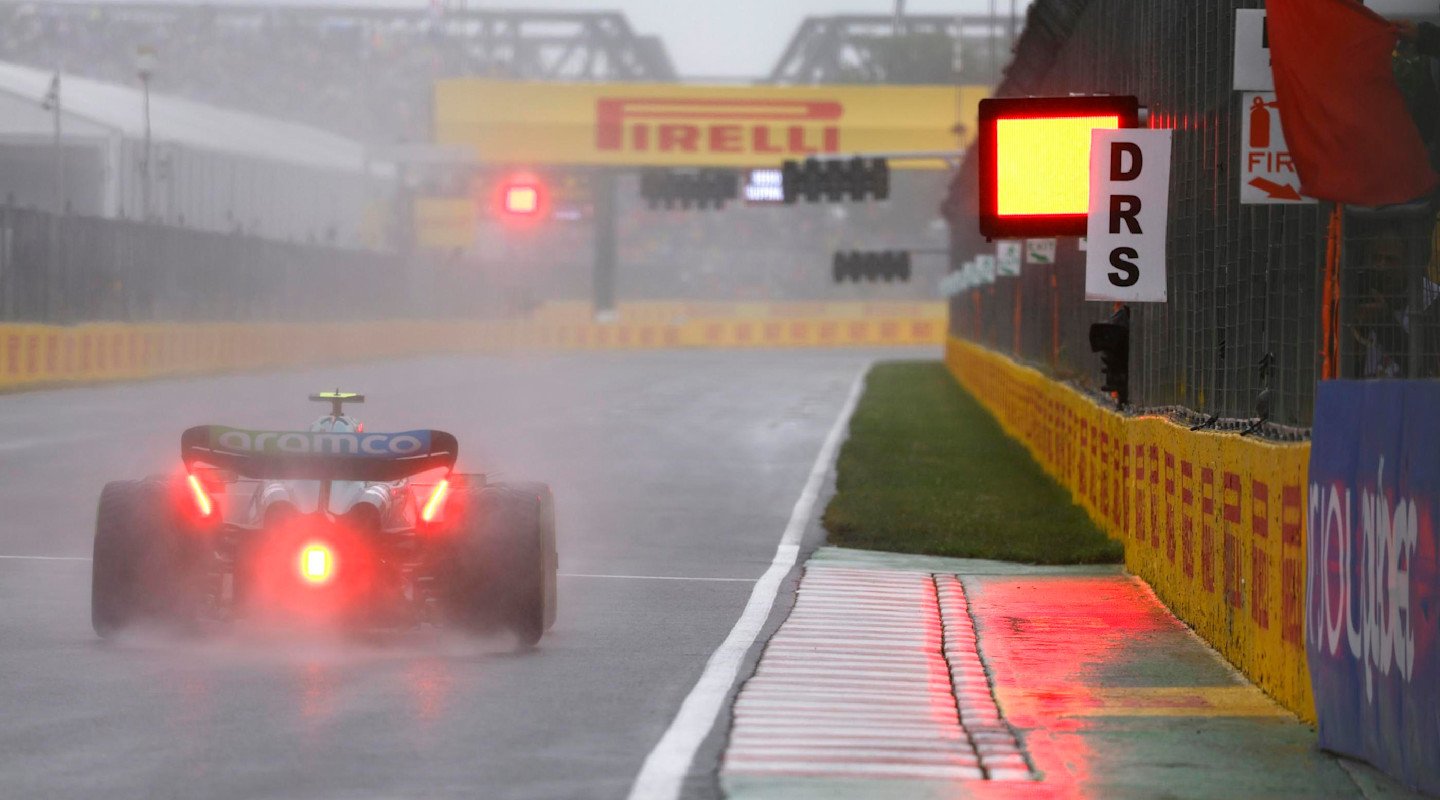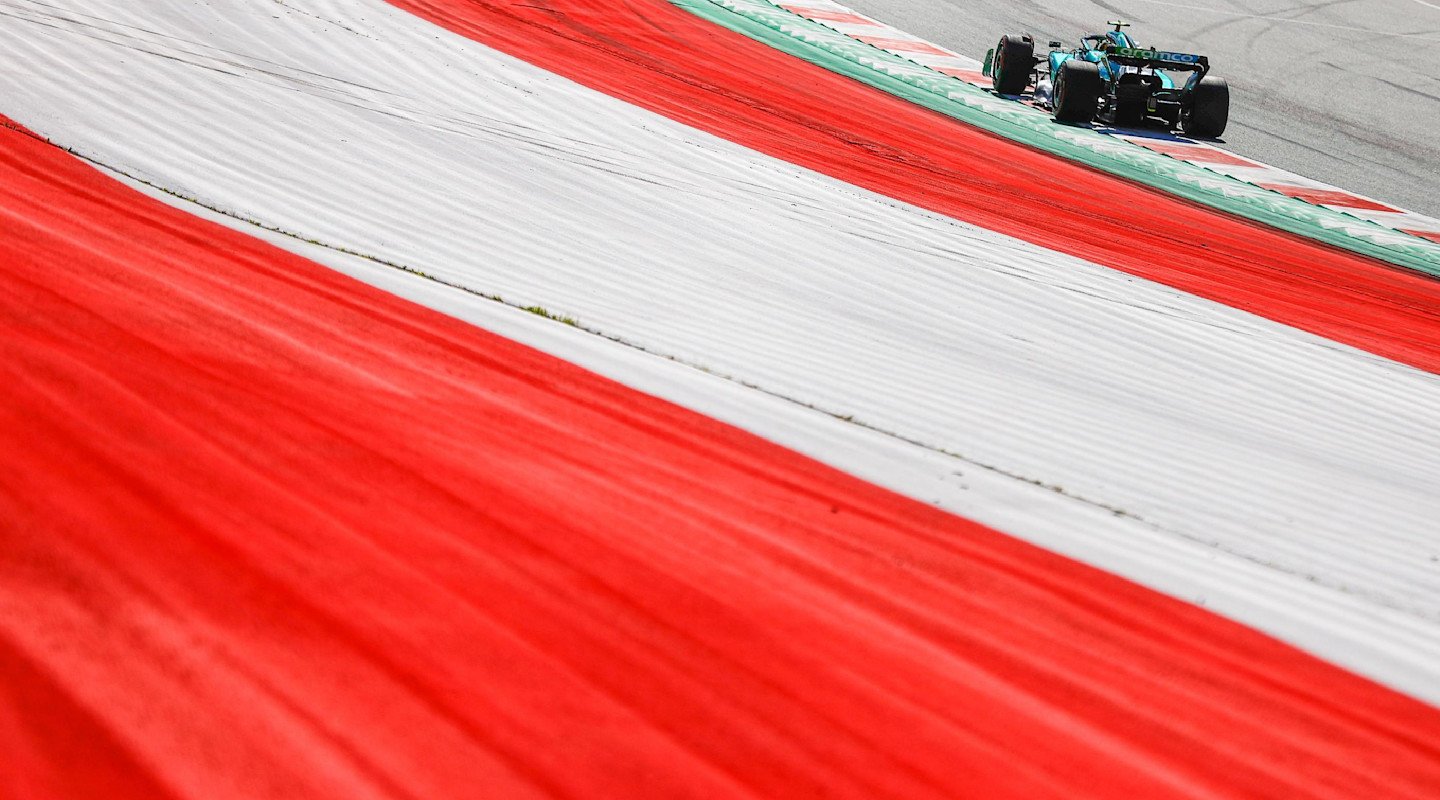
With our Official Trading Partner AvaTrade, we explore the rules and regulations of Formula One – and their unexpected origins – to help you make sense of the sport. In the latest guide, we look at the red flag and how its use has changed over time.
The pinnacle of motorsport demands technical perfection, and rules and regulations to match. It would take you hours to wade through Formula One's technical regulations and sporting regulations, and making sense of them can be daunting.
That's why we've teamed up with our Official Trading Partner AvaTrade to compile thorough guides to the things you need to know about F1. Last time out, AvaTrade presented a guide to race length, which showed how long Grands Prix can last if the red flag flies – or how short they can be.
This time, we delve deeper into the signal that has been used in Formula One since 1971, and how races can be stopped and restarted.

Why the red flags fly
The red flag is waved around the circuit at various marshal posts when the marshals have been given the signal to do so by the FIA Race Director. It can be flown in any session from Free Practice to the race. Drivers will also see the red flag pop up on digital signaling boards around the circuit, be told by their engineers, or even see the signal on the screen of their steering wheel.
When the red flag flies, drivers must reduce their speed and proceed back to the pitlane at a slow speed to await further instructions. While in the pitlane, tyre changes are allowed, which is a huge benefit to those drivers who haven't already stopped but a disadvantage for the drivers who have already sacrificed time and places to stop for tyres.
In a Grand Prix, the race clock will pause when the red flag is flown to ensure the drivers are given a chance to complete as much of the scheduled race distance as possible. This can also help marshals clean up debris from a crash or carry out repairs to any barriers that have been damaged.
In Qualifying, red flags pause the clock, so as not to curtail too much of the session. This can make for a long Qualifying session; the 2022 Emilia Romagna Grand Prix had five red flag interruptions. However, if a red flag is flown and there isn’t enough time to complete a Qualifying session, the Race Director might end the session early, which will work in the favour of drivers who have already set a competitive lap time.
Free Practice sessions can also be affected by red flags, but the session clock will keep ticking even if the session is 'stopped'. This is to ensure that practice sessions don't last too long and encroach on the rest of the weekend's schedule, but any stoppages do cost drivers valuable practice time.

Seeing red in Austria
The red flag was first shown at the 1971 Canadian Grand Prix for heavy fog, and in Austria the red flag was first flown in 1975. The 1978 Austrian Grand Prix at the Österreichring also marked the first time a Formula One Grand Prix was stopped part-way through and restarted to complete the originally scheduled distance; the first part of the race lasted seven laps and the second lap lasted 47 laps.
Before the 1978 Austrian Grand Prix, red flags would either be flown on the opening lap for a crash – restarting the race – or midway through the race to end the event early.
The Österreichring proved to be a treacherous venue; in the 1980s there were three red-flagged Grands Prix here with the 1987 race particularly troublesome given two pile-up crashes at the start and on the standing restart.
Safety concerns meant the Austrian Grand Prix was held on a safer venue, the A1-Ring (now called the Red Bull Ring), although this was built on the very same site as the Österreichring.
The change seems to have worked. Since 1997, the Austrian Grand Prix hasn't seen a single red flag.
That's not to say the red flag is emblematic of danger; rather, it could be seen as a sign of increasing safety standards: Eighty-two Formula One World Championship Grands Prix have been red-flagged and nearly a quarter of those red flags have been shown since 2014.
Learn more with AvaTrade
In the same way that a racing driver can constantly learn and improve using data, AvaTrade encourages traders to hone and refine their own skills – courses are created by experts, free to access, tightly focused and comprehensive.
You can discover more about our partnership with AvaTrade and access a suite of free educational resources designed to help you enhance your trading skills.

AVATRADE EXPLAINS THE F1 RULEBOOK
I / AM membership
The ultimate fan experience.
Get closer to the team with unparalleled access, behind-the-scenes insights and once-in-a-lifetime experiences, and enjoy exclusive competitions, rewards, offers and more.




































